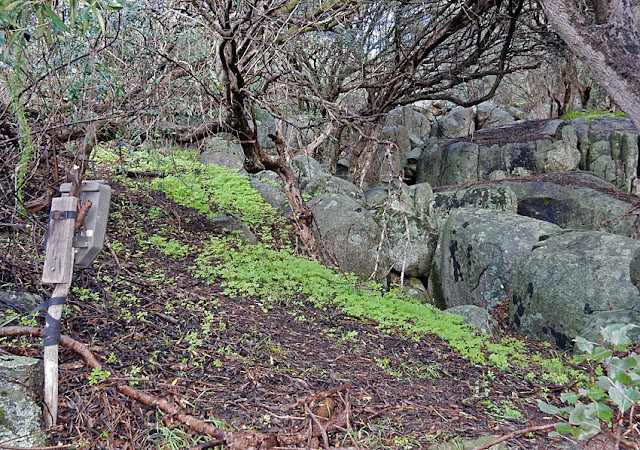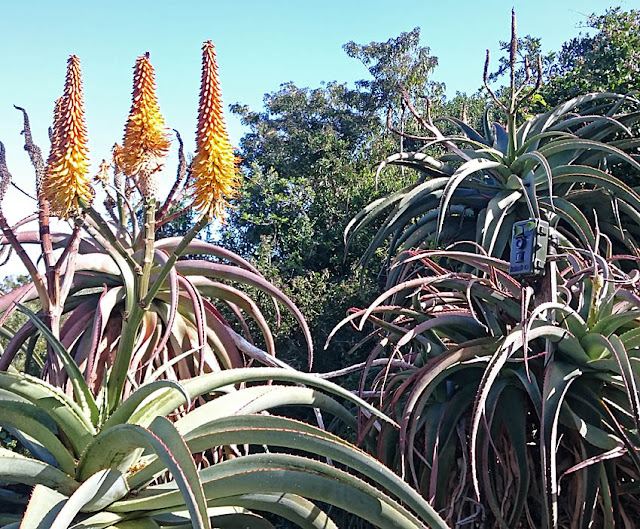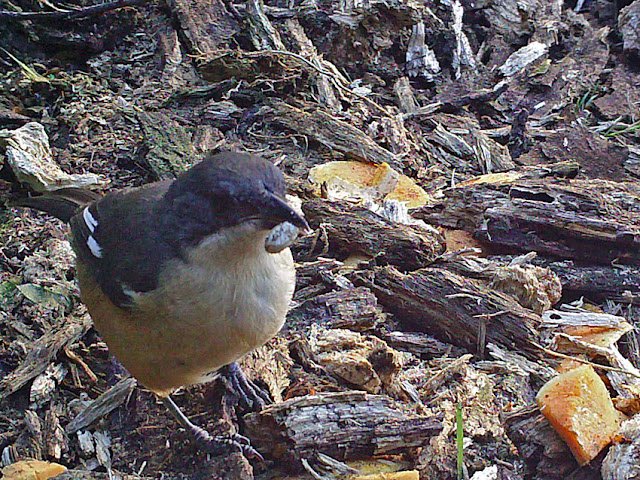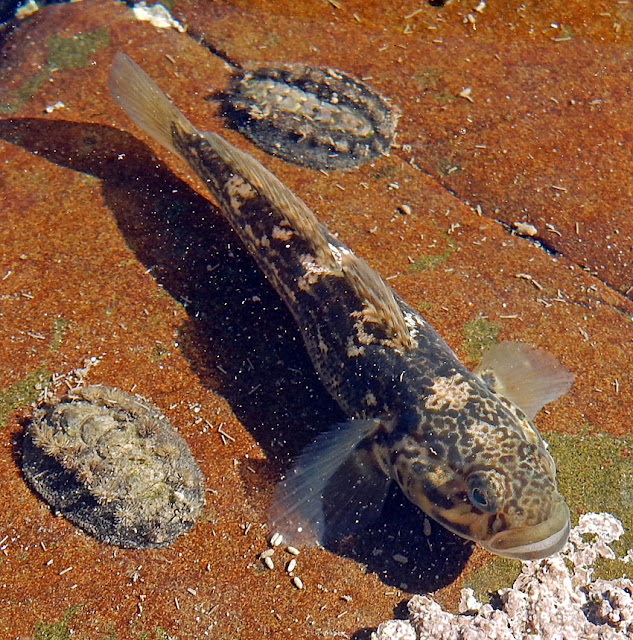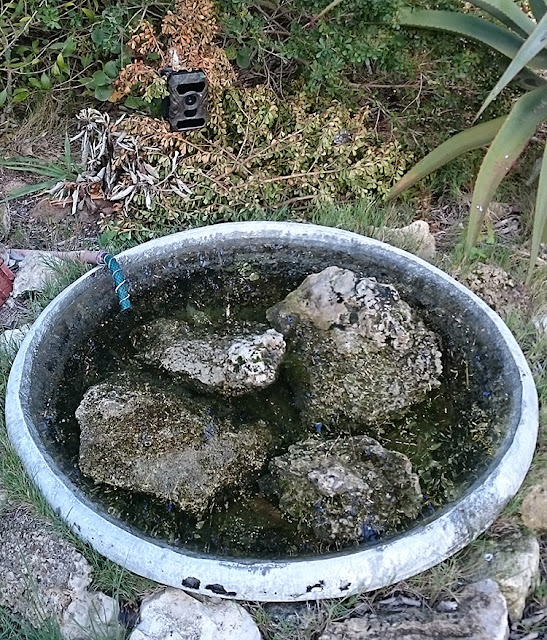 |
| SecaCam HomeVista keeping a wide eye on the comings and goings underneath a boulder at Paarl |
Unfortunately my Birdcam 2.0 is no longer working. As a result I don't have any camera trap that can take good color photographs (white flash) to help with identifying the species...
 |
| My best guess is Reddish-Grey Musk Shrew (Rooigrysmuskusskeerbek - Crocidura cyanea) |
The SecaCam HomeVista might be very good at detecting the shrews, but the IR images just aren't as good for identification. The feet seem to be very light above, also the flanks and belly seems light. The general shape and size, as well as snout and tail length also seem to point towards Reddish-Grey Musk Shrew, but it is hard to be sure, at least for me.
 |
| Looking for something tasty to eat, maybe a scorpion would be nice? |
I found a couple of scorpions hiding under the rocks nearby. Most were pretty small and would surely be a tasty treat for a hungry shrew.
 |
| Black Creeping Scorpion (Swart Kruipskerpioen - Opisthacanthus capensis) at Paarl Mountain |
I always enjoy getting camera trap images of shrews, even if it is usually hard to make out what species it is. It can even be hard just see what the critter is doing. Shrews like to move fast and most photographs are usually just a dark blur. So, when I get a semi-decent pose, but the shrew decided to look away, I should be grateful. It was at least sitting still in front of the camera trap for a split second...
 |
| Shrew looking over its kingdom: "everything the light touches" (erm or is it the other way around...) |
I'm wrapping up my camera trapping efforts at Paarl Mountain Nature Reserve. The first part of 2018 will most likely revolve around getting the data in order. I usually end up taking a small break between large camera trap projects. Hopefully later in the year I'll get around to doing some short camera trapping sessions at other interesting locations in and around Cape Town.




